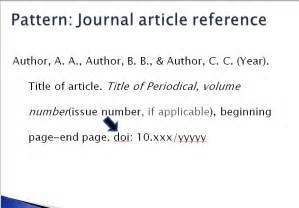How to Reference Articles: A Comprehensive Guide for Students and Researchers
Referencing articles correctly is crucial for academic integrity and avoiding plagiarism. Whether you're writing a research paper, essay, or even a blog post, understanding how to properly cite your sources is essential. This guide will walk you through the process, covering different citation styles and offering tips for accurate referencing.
Understanding Citation Styles
Different academic disciplines and publications adhere to specific citation styles. Some of the most common styles include:
- MLA (Modern Language Association): Primarily used in the humanities, MLA style emphasizes author-page citations in the text and a Works Cited page at the end.
- APA (American Psychological Association): Commonly used in social sciences, APA style uses author-date citations in the text and a References page at the end.
- Chicago/Turabian: Offering both a notes-bibliography and an author-date system, this style is versatile and frequently used in history and other fields.
- IEEE (Institute of Electrical and Electronics Engineers): Used primarily in engineering and computer science, IEEE utilizes numbered citations in the text and a References section.
Choosing the right style is crucial; always check the guidelines provided by your institution or publication.
Key Elements of a Reference
Regardless of the citation style, most references share common elements. These usually include:
- Author(s): List the author's last name followed by their initials. For multiple authors, use semicolons to separate entries.
- Year of Publication: Usually found on the article's title page or copyright page.
- Article Title: Capitalize only the first word and proper nouns. Place it in quotation marks.
- Journal Title: Italicize the journal title. Capitalize all major words.
- Volume and Issue Number: Often found on the journal's title page or the article's header.
- Page Numbers: The range of pages the article occupies.
- DOI (Digital Object Identifier): A persistent link to the article. This is increasingly important for online articles.
- URL (Uniform Resource Locator): If a DOI isn't available, include the URL. However, DOIs are preferred.
Example: APA Style Reference
Let's say we're referencing an article titled "The Impact of Social Media on Adolescent Self-Esteem" by Jane Doe, published in 2023 in the journal Cyberpsychology, Behavior, and Social Networking, Volume 16, Issue 2, pages 123-135, with a DOI of 10.1000/cyberpsy.12345. The APA reference would look like this:
Doe, J. (2023). The Impact of Social Media on Adolescent Self-Esteem. Cyberpsychology, Behavior, and Social Networking, 16(2), 123-135. https://doi.org/10.1000/cyberpsy.12345
Tips for Accurate Referencing
- Use a Citation Manager: Tools like Zotero, Mendeley, or EndNote can significantly simplify the referencing process, automatically formatting citations and creating bibliographies.
- Double-Check Your Work: Carefully review your references for accuracy before submitting your work. Errors can undermine the credibility of your research.
- Consult Style Guides: Familiarize yourself with the specific style guide you're using. Many universities and publishers provide detailed style guides online.
- Seek Help if Needed: Don't hesitate to ask your instructor, librarian, or writing center for assistance if you're struggling with referencing.
Properly referencing articles is a fundamental skill for any student or researcher. By following these guidelines and utilizing available resources, you can ensure the accuracy and integrity of your work. Remember, consistent and correct referencing demonstrates respect for intellectual property and contributes to a culture of academic honesty.
